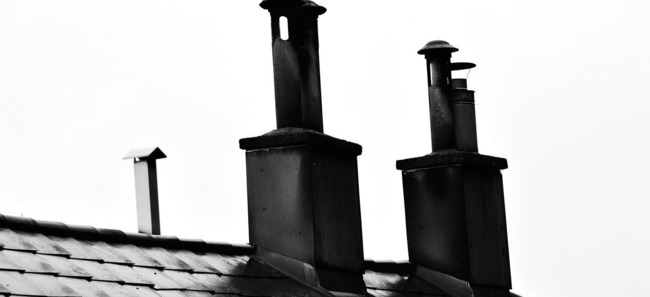
27 Sep, 2024/ by Surveyor Local /Tips
As a homeowner, you'll know only too well the variety of problems that your property throws up for you to deal with.
It really doesn't help if you don't know what some of the names and terms mean, let alone not understanding what their intended function is. And that includes flashings.
Flashings are the junctions between the roof slopes and adjoining abutments, such as chimney stacks, or parapet walls, and they are generally formed from lead.
The reason why it's such an important job to check the flashings occasionally is that they may come away from their fixtures, allowing rainwater to seep in and cause flooding or dampness with the house, or, if the problem remaining unchecked and unresolved, rotting the timbers holding up the roof.
The causes are reasonably varied, from poor workmanship when they were first put in place, to age and weather, while the membrane underneath can shrink over time, or any remedial work has not fixed the problem or, indeed, made it worse.
Any problems with the flashing really need to be fixed as soon as possible or the issue with damp will worsen significantly.
Periodically, too, flashings will require re-dressing tight to the roof to ensure a permanent and watertight joint.
If you're considering doing the job yourself, flashings must be properly wedged and pointed to ensure they are fully secured into the masonry above the roof covering. They should be bedded at least 25mm into the appropriate mortar joint and lead wedges should generally be provided at approximately 450mm spacing to ensure that the flashings are properly secured.
However, if you have little or no experience, you should leave the job to professional roofers and builders. Because of where the flashings might be sited, you should expect any repair bill to include the cost of putting up scaffolding as a safety measure for whoever is appointed to carry out any works.
But what happens when the house is what you've set your heart on, and you look at the roof and wonder if it looks a little tired? How do you know if there are any problems with the flashings, the roof structure itself, the chimney stacks or any other places where flashings are used?
For peace of mind, it's always a good idea to book a chartered surveyor to check the property over thoroughly. While they won't climb up to check the state of the roof and other connected points of interest, the surveyor will have other ways of verifying the existence of any problems, such as the use of binoculars at ground level, employing a drone with a camera affixed, inspection within the loft and other roof-spaces, etc.
The report will provide an easy-to-read traffic-light system of the severity of findings from their inspection, where green confirms all is well, amber indicates that work will be necessary in the near future and red confirms that there is a critical problem that needs resolution immediately.
With a RICS Level 3 Survey, you will have the full detail of any problems throughout the property, as well as a list of the problems and a likely cost for fixing them.
This is a useful tool in helping you decide whether it's worth continuing with the purchase of that home, as well as giving you some proof and data with which to renegotiate with the seller on the asking price to help pay for any remedies that are serious and immediately required.
Are you looking at purchasing a particular property but are concerned about its state and how much it might cost you in the future if you go ahead? Are you looking for a conscientious chartered surveyor with an eye for detail at a value-for-money fee?
That's where it is really worth contacting Surveyor Local!
Call to get your no-obligation survey quote started, or to discuss your concerns with the acquisition of your planned property.
Or you can get a quick quote, using Surveyor Local's easy-to-use quote generator. Simply input your name, postcode, email address, phone number and an approximate value of the property (usually the agreed price), and we'll give you an instant quote for the work (with an email copy).
We'll do the rest once you confirm your acceptance of the quote.
